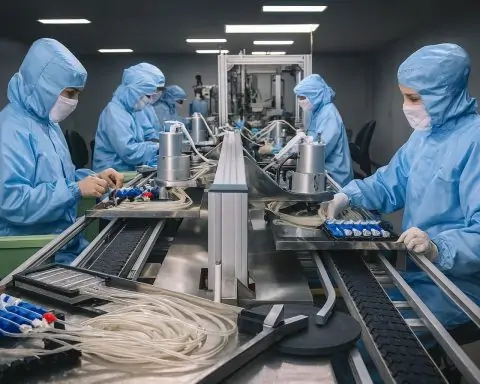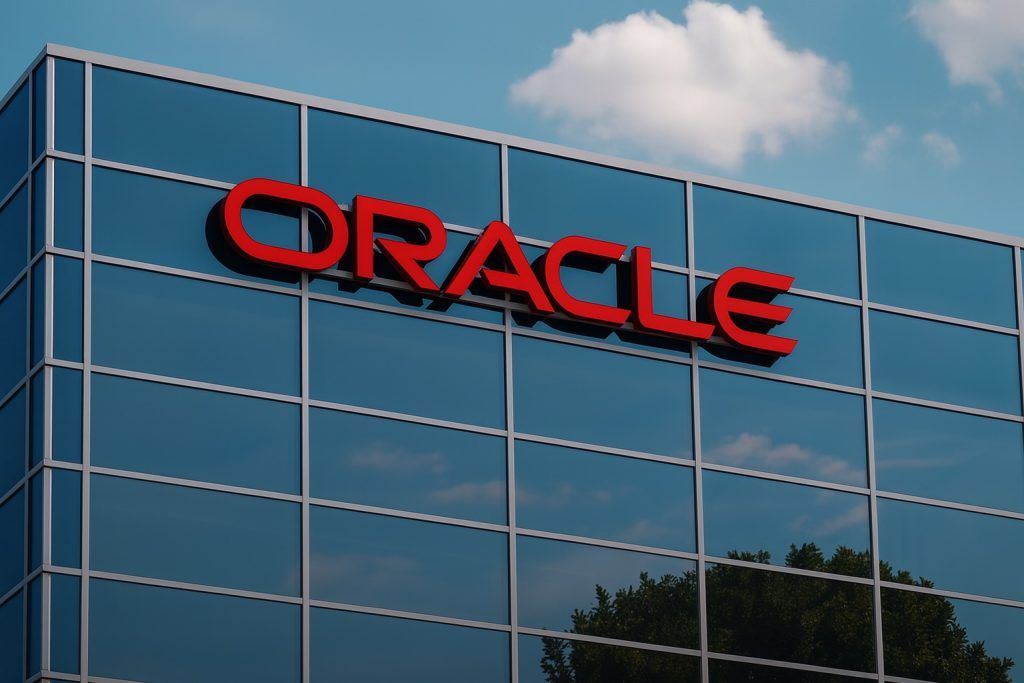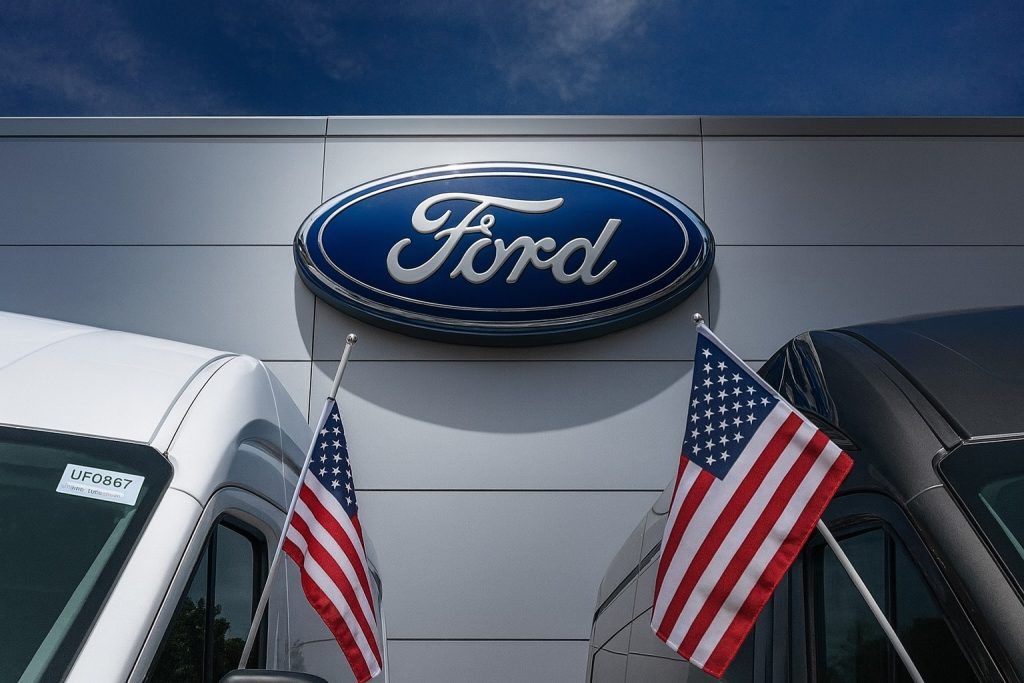- Record High Surge: Navitas Semiconductor (NASDAQ: NVTS) stock jumped ~18% to around $17 on Oct. 20, 2025, hitting an all-time high and closing near $17.10 [1] [2]. Shares are now up over 330% in 2025 (and nearly 750% in the past six months), after trading as low as $1.53 within the past year [3].
- Nvidia AI Deal Catalyst: A new partnership with NVIDIA to supply advanced gallium nitride (GaN) and silicon carbide (SiC) power chips for 800-volt AI data centers ignited a week-long 78% stock rally [4]. Navitas’s CEO hailed the Nvidia deal as a “watershed moment” that instantly raised the company’s profile [5].
- Pivot to EV & Power Markets: Under new CEO Chris Allexandre (formerly of Renesas), Navitas is pivoting from phone chargers into high-growth arenas like AI servers and electric vehicles [6]. This week it even launched a joint “Digital Power” lab with China’s GigaDevice to co-develop next-gen power solutions for AI data centers, EVs and renewable energy systems [7].
- GaN/SiC Tech Edge: Navitas’s GaN and SiC chips run cooler and switch up to 100× faster than silicon, enabling roughly 40% higher power efficiency – crucial for NVIDIA’s high-voltage “AI factories” that far exceed traditional 48V systems [8]. These cutting-edge semiconductors are seen as key to improving energy usage in AI supercomputers and EVs.
- Bull vs. Bear Debate: Analysts are split on NVTS. Bulls tout Navitas as “one of the most important growth stories of the decade” in EV/AI power chips [9] and a potential “transformative company in power electronics” riding the AI and EV megatrends [10]. Bears counter that an “enormous amount of growth is already priced in,” noting NVTS trades at ~30× forward sales with no profits yet [11]. Several have urged caution, as the stock’s valuation implies over 50% downside to the average price target around $6–7 [12].
NVTS Stock Skyrockets to Record High
Navitas shares have been on a remarkable tear, climaxing in a record run-up ahead of and through Oct. 20. On Monday, NVTS spiked another 16–18%, touching an intraday high of $17.79 and finishing around $17.06–$17.10 [13] [14]. This marks the highest price in the company’s history. For context, Navitas started the year near $4 and was languishing near $2 per share in late 2024 [15] – a far cry from the mid-teens today. In fact, the stock hit a 52-week low of just $1.53 earlier in the year [16]. The stunning rally means Navitas has now gained over 330% year-to-date (and roughly 750% since May, when Nvidia first signaled interest) [17]. Heavy trading volumes accompanied the surge, with Monday’s turnover of ~90 million shares nearly 3.5× the average volume [18] [19], as momentum buyers piled in.
Some of the explosive move appears tied to a short squeeze dynamic. About a quarter of Navitas’s float is sold short [20], so as the price rocketed higher, bearish traders rushed to cover, further propelling the stock. “It’s been a shoot-to-orbit move for what was once an obscure small-cap stock,” one market observer quipped amid the frenzy [21]. Indeed, NVTS has essentially gone from under-the-radar to one of 2025’s top-performing semiconductor stocks [22] virtually overnight.
Volatility is extreme, however. After nearly doubling last week, NVTS briefly pulled back ~6% on Friday, Oct. 17 (closing at $14.66) [23], before resuming its climb. And on Tuesday Oct. 21, the stock saw some profit-taking: by late morning, NVTS traded around $15.07, down ~12% from Monday’s close [24]. Such swings underscore the jittery tug-of-war between ardent bulls and skeptical bears at these lofty levels.
NVIDIA Partnership Ignites AI Hype
The catalyst for Navitas’s meteoric rise was a headline-grabbing deal with NVIDIA – a development that positioned Navitas at the heart of a critical next-generation tech trend. On October 13, Navitas announced it has “developed advanced 800 VDC GaN and SiC power devices” for NVIDIA’s forthcoming AI data centers [25]. In plain terms, Navitas will be supplying high-voltage power chips to NVIDIA’s new “AI factory” supercomputing infrastructure, which runs on 800-volt direct current (a radical jump from the ~48V standard in traditional server racks). The news electrified investors. Navitas’s stock shot up ~21% that day, closing around $9.97 [26], and kept climbing – up another 26% in pre-market trading the next morning. Over the course of that week, NVTS nearly doubled in value, rising from the high single digits to the mid-teens [27]. By Oct. 16, shares hit $15.63 (at the time a 12-month high) [28], and the rally only accelerated on Oct. 20 after a weekend of buzz and follow-on news.
Navitas’s management hailed the NVIDIA collaboration as a game-changer for the company. “As NVIDIA drives transformation in AI infrastructure, we’re proud to support this shift with advanced GaN and SiC power solutions that enable the efficiency, scalability, and reliability required by next‑generation data centers,” said Navitas CEO Chris Allexandre in a statement about the partnership [29]. For Navitas – a Silicon Valley startup founded in 2014 and known until recently mainly for its fast smartphone charger chips – being tapped by NVIDIA, the world’s leading AI chipmaker, is a powerful endorsement of its technology. Industry observers see it as validation of Navitas’s focus: one analysis even dubbed Navitas “one of the most important growth stories of the decade,” given its unique specialization in GaN/SiC power chips just as demand from AI servers and electric vehicles is set to explode [30] [31]. In short, NVIDIA’s backing instantly boosted Navitas’s credibility from a niche player to a potential key enabler of the AI revolution.
Crucially, Navitas’s GaN and SiC technology addresses a major engineering hurdle for NVIDIA’s new AI supercomputers. NVIDIA’s next-gen data centers will use an unprecedented 800-volt power architecture to deliver massive amounts of energy more efficiently to racks of AI processors [32]. Higher voltage dramatically reduces power loss and allows far more capacity through the same cables, but it also demands new power conversion hardware. This is where Navitas comes in: Gallium nitride and silicon carbide chips can switch electricity much faster and handle high voltages with far less waste heat than legacy silicon power devices. Navitas claims its GaN transistors switch up to 100× faster than silicon and boost power efficiency by ~40% [33]. These attributes are crucial for managing 800V DC distribution – enabling NVIDIA’s so-called “AI factories” to feed energy-hungry GPUs with minimal energy loss. In effect, Navitas’s chips help make the 800V concept feasible, allowing data center power to be converted and delivered in a simpler, more efficient way [34]. This technical edge explains why NVIDIA sought out Navitas as a partner, and it underpins the excitement around Navitas’s future in AI infrastructure.
Pivoting Beyond Chargers: EVs, Labs and Capacity Builds
The NVIDIA deal is one piece of Navitas’s broader pivot into high-growth markets. After carving out a niche in mobile chargers with its GaNFast™ power ICs, Navitas has been aggressively repositioning itself in 2025 to target much larger opportunities in data centers, electric vehicles (EVs), renewable energy, and other high-power applications [35] [36]. This strategic shift accelerated under CEO Chris Allexandre, a semiconductor veteran (formerly an executive at Renesas) who took the helm earlier this year [37]. Navitas raised $100 million in Q2 2025 to fund its expansion and even began constructing a new GaN chip fabrication facility to boost production capacity for these emerging markets [38].
Navitas is also striking partnerships to bolster its ecosystem. Beyond NVIDIA, the company teamed up with Chinese chipmaker GigaDevice to launch a joint “Digital Power Lab” this month, aimed at co-developing next-generation high-efficiency power solutions for data centers, EVs, and smart energy systems [39]. Navitas is collaborating with EV charger manufacturers and solar inverter firms as well, leveraging its recently acquired GeneSiC SiC division to serve automotive and clean energy clients [40] [41]. The overarching bet is that GaN and SiC will become ubiquitous in the power electronics underpinning AI computing, electric vehicles, 5G networks, and modern grids [42].
Internally, Navitas projects a huge runway: the company’s co-founder estimates that by 2030, the combined market for GaN and SiC in AI applications alone could reach $2.6 billion [43]. By pivoting early and securing marquee customers like NVIDIA (and potential EV partners down the road), Navitas hopes to establish itself as a go-to provider of next-gen power chips – grabbing a meaningful slice of that growing pie. This bold strategy has dramatically improved market sentiment around the once-sleepy stock. NVTS has now vastly outperformed the broader semiconductor index in 2025 [44], and even industry heavyweights have taken notice of the wide-bandgap (GaN/SiC) trend. For instance, TSMC – the world’s top chip fab – also hit record highs this year on surging AI chip demand [45]. But unlike TSMC or NVIDIA, tiny Navitas offers a pure-play exposure to GaN/SiC power technology in U.S. markets, which gives its stock a certain scarcity value in the eyes of optimistic investors [46].
Analysts Split on Sustainability: Hype vs. Fundamentals
Amid the euphoria, Wall Street is fiercely debating whether Navitas’s fundamentals can justify its soaring stock price. The company’s market capitalization now exceeds $3.1 billion after the rally [47], yet its annual revenues are only on the order of a few tens of millions and it remains unprofitable [48]. By one estimate, NVTS is currently trading at a price-to-sales ratio north of 45 (well over 30× its projected forward sales) – “an extremely rich valuation even in the frothy semiconductor sector,” as one analyst noted [49]. In other words, the stock’s price already assumes years of breakneck growth and flawless execution. “An enormous amount of growth is already baked into the stock price,” one skeptical analyst warned, arguing Navitas will need to deliver years of stellar results to grow into its valuation [50]. Any stumble – be it production delays or slower-than-expected orders from AI and EV customers – could send the stock reeling from these heights, bears caution.
Most professional analysts are urging some caution at this stage. Notably, Rosenblatt Securities downgraded Navitas to “Neutral” on Oct. 20 despite the Nvidia-related optimism. Rosenblatt’s analyst, Kevin Cassidy, did dramatically raise his price target from $4 to $12 (a nod to Navitas’s improving prospects), but even $12 is well below the current trading range [51]. In fact, $12 would still mean a sizeable pullback from ~$17–15. And Rosenblatt is not alone in its tempered outlook. Across about eight analysts covering NVTS, the average 12-month price target is only ~$6.30 per share [52] [53]. Even the most bullish target on Wall Street right now tops out around $12 [54]. This consensus implies that, as of now, analysts collectively see 50% or more downside risk from the recent $15–17 levels. While few have issued outright “Sell” ratings – many have moved to Hold/Neutral – the muted targets indicate that even bulls have reined in near-term expectations [55]. Put simply, NVTS looks very overvalued by conventional metrics, unless Navitas’s business ramps up faster than anyone currently anticipates.
On the other hand, the bullish camp argues that traditional yardsticks might undervalue Navitas’s strategic position at the cusp of an industry shift. They point out that Navitas is virtually the only pure-play GaN power semiconductor firm in the U.S. public markets [56]. At a time when GaN and SiC are “hot” technologies and major trends (AI, EV, renewable power) are converging, that uniqueness confers a premium. Optimists say Navitas could ride the AI and EV megatrends to become “a transformative company in power electronics” over the next decade [57] – akin to how early bets on Nvidia or Tesla paid off big despite looking expensive in their high-growth years. They also note that giants like Nvidia itself didn’t look cheap by P/E or P/S ratios in their formative stages; what mattered was their technology’s potential and market trajectory. If Navitas executes well and secures more design wins across data centers, EVs, and clean energy, the current valuation might one day prove justified (or even modest).
For now, however, skepticism prevails in the market mix. The presence of heavy short interest (~25–30% of the float) reflects a substantial number of traders betting that NVTS’s run-up will reverse course [58]. This makes the stock especially volatile – rapid jumps can force shorts to cover (driving it higher), while any downturn could be exacerbated by short sellers piling on again [59] [60]. Even some independent research voices have chimed in with caution. For example, a recent note from Zacks Investment Research noted that while Navitas’s momentum is strong, recent positive earnings estimate revisions “may not translate into further price increase” in the near term [61]. In other words, a lot of good news may already be priced in, limiting the upside unless truly game-changing results materialize.
Outlook – High Hopes vs High Bar
Looking ahead, Navitas now faces the challenge of living up to the hype. The company is set to report its third-quarter 2025 earnings on November 3, 2025 [62], which could serve as the next major catalyst for NVTS. While no blockbuster revenue from the NVIDIA deal will show up yet (those AI power chips are still in development), analysts and investors will be laser-focused on any guidance or commentary that bridges the gap between Navitas’s potential and its performance. Key things to watch include updates on design wins (e.g. additional “AI factory” customers or EV programs), timelines for product commercialization with NVIDIA, and the growth outlook for its existing GaN charger and SiC product lines. Navitas’s management will be under pressure to justify the stock’s valuation by outlining a credible path to revenue growth and profitability. As one analyst put it, “Navitas has won the lottery in terms of attention. Now it has to prove it can deliver the goods.” [63]
Broader market conditions will play a role as well. The semiconductor sector at large has been buoyed by 2025’s AI boom, but remains sensitive to economic swings and interest rates. Any shift in risk appetite could test high-flying names like NVTS. For Navitas, the stakes are high: the company has undeniably captured the market’s imagination by aligning with one of tech’s biggest themes (AI) and one of its biggest partners (Nvidia). The coming months will reveal whether Navitas can turn that early lead in GaN/SiC power technology into sustained commercial success – or whether the stock’s gravity-defying rise will meet an equally forceful reality check. On the back of a historic 750% rally and at 330%+ gains in just this year, Navitas now sits at the crossroads of immense opportunity and immense expectations. The bulls have made their bet that this young innovator is on the cusp of a power electronics revolution. The bears are betting that gravity (and fundamentals) will eventually bring the high-flier back to Earth. NVTS investors won’t have to wait long to start getting answers.
Sources: TechStock² (ts2.tech) market analysis [64] [65]; Reuters and MarketBeat market data [66] [67]; Navitas Semiconductor press release and investor statements [68] [69]; GigaDevice joint lab announcement [70]; Wall Street analyst commentary and price targets [71] [72].
References
1. ts2.tech, 2. www.marketbeat.com, 3. ts2.tech, 4. ts2.tech, 5. ts2.tech, 6. ts2.tech, 7. ts2.tech, 8. ts2.tech, 9. ts2.tech, 10. ts2.tech, 11. ts2.tech, 12. ts2.tech, 13. ts2.tech, 14. www.marketbeat.com, 15. ts2.tech, 16. ts2.tech, 17. www.marketbeat.com, 18. www.marketbeat.com, 19. www.marketbeat.com, 20. ts2.tech, 21. ts2.tech, 22. ts2.tech, 23. www.marketbeat.com, 24. www.marketbeat.com, 25. ts2.tech, 26. ts2.tech, 27. ts2.tech, 28. ts2.tech, 29. ts2.tech, 30. ts2.tech, 31. ts2.tech, 32. ts2.tech, 33. ts2.tech, 34. ts2.tech, 35. ts2.tech, 36. ts2.tech, 37. ts2.tech, 38. ts2.tech, 39. ts2.tech, 40. ts2.tech, 41. ts2.tech, 42. ts2.tech, 43. ts2.tech, 44. ts2.tech, 45. ts2.tech, 46. ts2.tech, 47. ts2.tech, 48. ts2.tech, 49. ts2.tech, 50. ts2.tech, 51. ts2.tech, 52. www.marketbeat.com, 53. ts2.tech, 54. ts2.tech, 55. ts2.tech, 56. ts2.tech, 57. ts2.tech, 58. ts2.tech, 59. ts2.tech, 60. ts2.tech, 61. ts2.tech, 62. www.marketbeat.com, 63. ts2.tech, 64. ts2.tech, 65. ts2.tech, 66. ts2.tech, 67. www.marketbeat.com, 68. ts2.tech, 69. navitassemi.com, 70. ts2.tech, 71. ts2.tech, 72. ts2.tech









